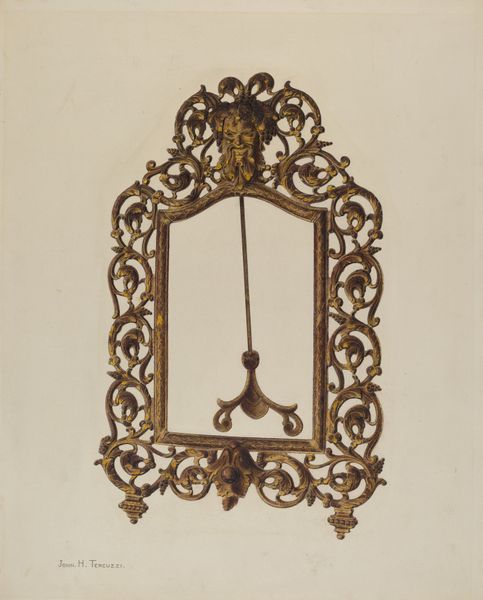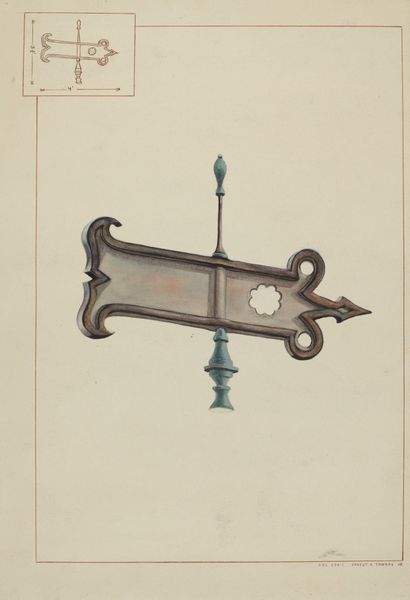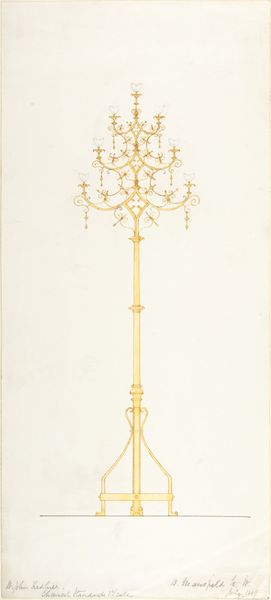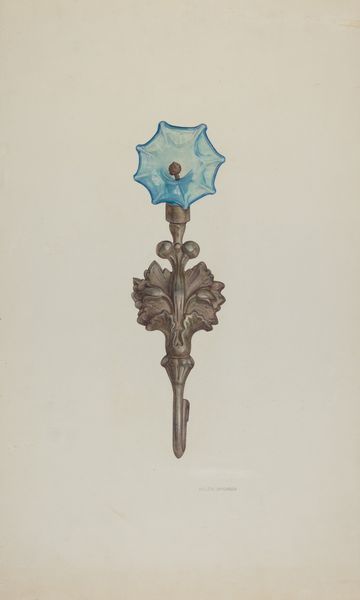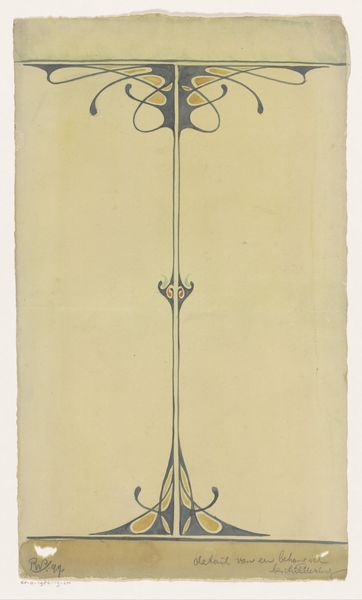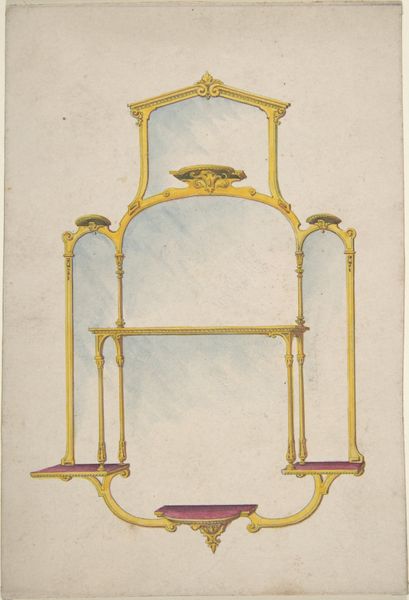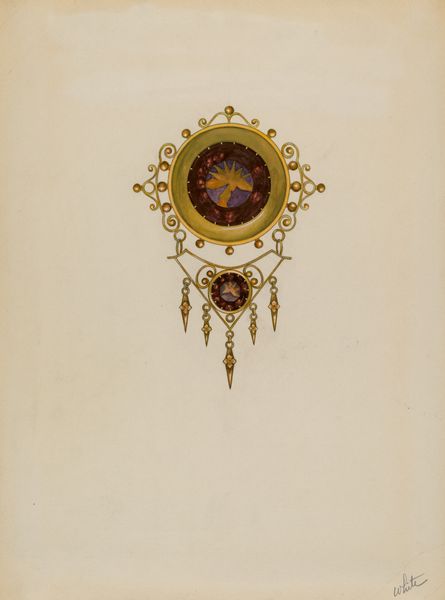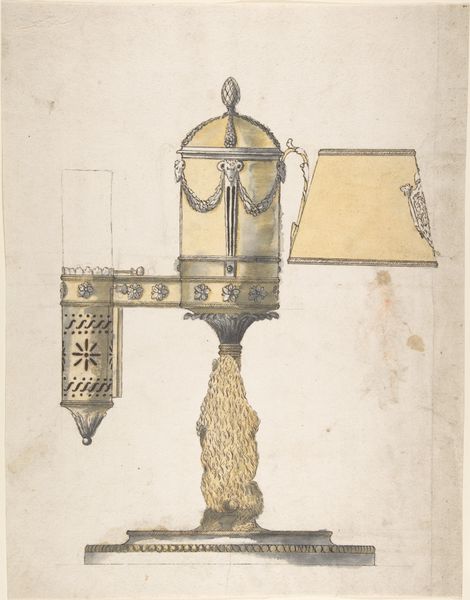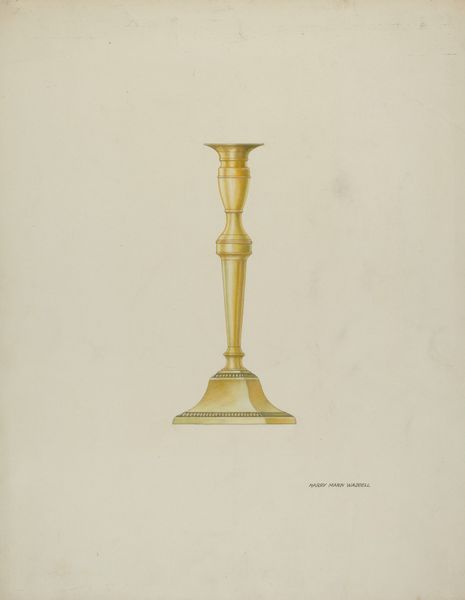
drawing, watercolor
#
drawing
#
water colours
#
watercolor
#
watercolor
Dimensions: overall: 44.5 x 32 cm (17 1/2 x 12 5/8 in.) Original IAD Object: 51 1/2" high
Copyright: National Gallery of Art: CC0 1.0
Editor: So, this watercolor by Lucille Chabot from around 1938 is titled "Weather Vane." It's a beautifully detailed depiction, almost architectural in its precision, but what jumps out at me is that prominent year inscribed, 1673. How do you interpret this work? Curator: The prominent year absolutely keys the cultural memory imbedded within the artwork. Think of weather vanes, less as mere functional objects indicating wind direction, and more as totemic markers. Inscribing 1673 anchors this particular vane – and therefore, the image of it – to a specific history. Do you think Chabot wanted us to reflect on the symbolism, perhaps of continuity and rootedness in the face of time’s passage? Editor: I hadn't considered it as a 'totemic marker' of continuity before, but the specificity of the date, 1673, does seem intentional. It's like she's not just showing us a weather vane, but a historical artifact holding some cultural importance. Curator: Exactly. Think of what symbols, consciously or unconsciously, permeate our own environment and psyche. What do they communicate about power, stability, identity? That golden, arrow-like shape inherently implies direction. The ornament, an appeal to cultural or religious meaning that can shift and change. In representing this artifact, is Chabot suggesting we reconsider our connection with the past and what it visually signifies? Editor: It’s interesting to think about it in terms of broader cultural and even psychological weight; I was initially focusing only on its form, but the symbolism of history is definitely a strong element here. Curator: Yes! By understanding this visual encoding we discover how the symbolic narratives and cultural continuity endure, embedded in what might seem like ordinary objects. Perhaps such historical encoding holds a powerful reminder of where we stand in relation to the past, too.
Comments
No comments
Be the first to comment and join the conversation on the ultimate creative platform.
